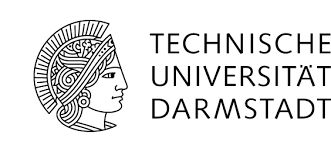Request Demo
Last update 08 May 2025
mTOR x FKBP1A
Last update 08 May 2025
Related
5
Drugs associated with mTOR x FKBP1ATarget |
Mechanism FKBP12 [+1] |
Active Org. |
Originator Org. |
Active Indication |
Inactive Indication |
Drug Highest PhaseApproved |
First Approval Ctry. / Loc. United States |
First Approval Date30 May 2007 |
Target |
Mechanism FKBP12 [+1] |
Active Org. |
Originator Org. |
Active Indication |
Inactive Indication- |
Drug Highest PhasePreclinical |
First Approval Ctry. / Loc.- |
First Approval Date20 Jan 1800 |
Target |
Mechanism FKBP12 [+1] |
Active Org. |
Originator Org. |
Active Indication |
Inactive Indication- |
Drug Highest PhasePreclinical |
First Approval Ctry. / Loc.- |
First Approval Date20 Jan 1800 |
219
Clinical Trials associated with mTOR x FKBP1ANCT04433572
Temsirolimus Adventitial Delivery to Improve ANGioplasty And/or Atherectomy Revascularization Outcomes Below the Knee: a Multicenter, Randomized, Double-Blind, Placebo-Controlled Trial to Evaluate the Effect of Temsirolimus Perivascular Injection 0.1 Mg/mL on the Incidence of Ischemia-Driven Major Amputation, Clinically Driven Target Lesion Revascularization, and Clinically Relevant Target Lesion Occlusion After Revascularization of Lesions Below the Knee in Patients with Symptomatic Rutherford 3-5 Peripheral Artery Disease
A multicenter, randomized, double-blind, placebo-controlled trial to evaluate the effect of Temsirolimus Perivascular Injection 0.1 mg/mL on the incidence of ischemia-driven major amputation, clinically driven target lesion revascularization, and clinically relevant target lesion occlusion after revascularization of lesions below the knee in patients with symptomatic Rutherford 3-5 peripheral artery disease. The primary safety endpoint will be gathered at 1-month post-index procedure. The primary efficacy endpoint will be gathered at 6 months post-index procedure. Participants will be followed for up to 5 years post-index procedure.
Start Date30 Apr 2025 |
Sponsor / Collaborator |
NCT04199026
Pilot Trial of an Implantable Microdevice for In Vivo Drug Sensitivity Testing in Patients With Sarcomas
This early phase I trial studies the side effects of implanting and removing a microdevice in patients with sarcomas that have spread to other places in the body (metastatic) or have come back (recurrent). Microdevices are rice-sized devices that are implanted into tumor tissue and are loaded with 10 different drugs that are delivered at very small doses, or "microdoses," which may only affect a very small, local area inside the tumor. The purpose of this study is to determine which drugs delivered in the microdevice affect tumor tissue in patients with sarcomas.
Start Date25 Feb 2025 |
Sponsor / Collaborator |
100 Clinical Results associated with mTOR x FKBP1A
Login to view more data
100 Translational Medicine associated with mTOR x FKBP1A
Login to view more data
0 Patents (Medical) associated with mTOR x FKBP1A
Login to view more data
210
Literatures (Medical) associated with mTOR x FKBP1A01 Jan 2025·Methods in Molecular Biology
Anchor-Away: Efficient, Conditional Depletion of Nuclear Proteins in Saccharomyces cerevisiae
Article
Author: Côté, Valérie ; Côté, Jacques ; Xu, Ke
01 Jan 2025·Genes to Cells
Rapamycin Abrogates Aggregation of Human α‐Synuclein Expressed in Fission Yeast via an Autophagy‐Independent Mechanism
Article
Author: Sugiura, Reiko ; Yamada, Ryuga ; Kurosaki, Ryo ; Sugimoto, Yoshitaka ; Yamane, Tomonari ; Takasaki, Teruaki
01 Jun 2024·Neurochemistry International
Rapamycin improves the survival of epilepsy model cells by blocking phosphorylation of mTOR base on computer simulations and cellular experiments
Article
Author: Qi, Yue ; Liu, Dengxin ; Wu, Mei ; Ma, Xuntai ; Li, Kezhou ; Ying, Xiran ; Cao, Jun-Feng ; Xiong, Li ; Zhang, Xiao ; Gong, Yunli
Analysis
Perform a panoramic analysis of this field.
login
or

AI Agents Built for Biopharma Breakthroughs
Accelerate discovery. Empower decisions. Transform outcomes.
Get started for free today!
Accelerate Strategic R&D decision making with Synapse, PatSnap’s AI-powered Connected Innovation Intelligence Platform Built for Life Sciences Professionals.
Start your data trial now!
Synapse data is also accessible to external entities via APIs or data packages. Empower better decisions with the latest in pharmaceutical intelligence.
Bio
Bio Sequences Search & Analysis
Sign up for free
Chemical
Chemical Structures Search & Analysis
Sign up for free





